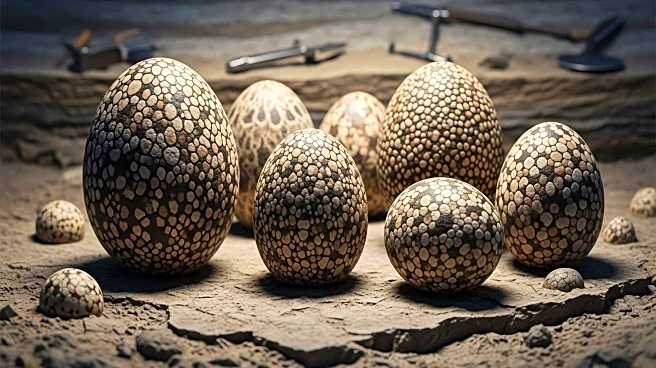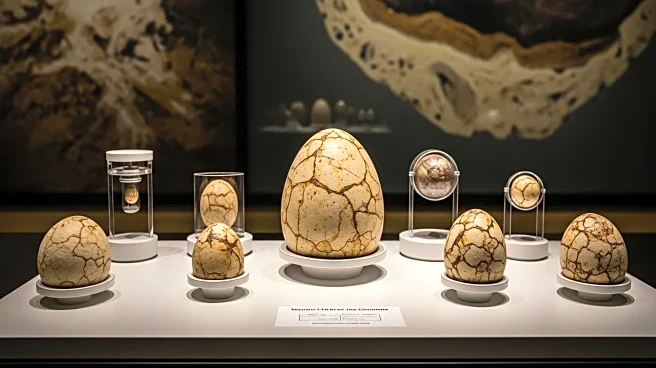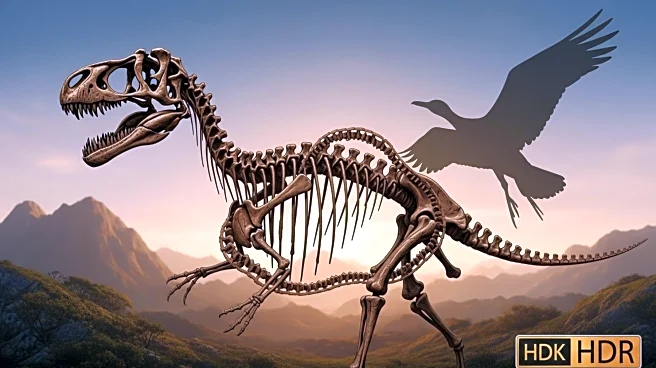What's Happening?
A team of scientists has successfully dated a clutch of 28 dinosaur eggs found in the Qinglongshan fossil reserve in central China to approximately 86 million years ago. This was achieved using a method known as carbonate uranium-lead (U-Pb) dating, which is typically used to determine the age of carbonate minerals. The technique involves analyzing the decay of uranium into lead within the mineral structure. The eggs, primarily belonging to the species Placoolithus tumiaolingensis, were found to be well-preserved, with their original shapes largely intact. This discovery marks the first time fossils from the Qinglongshan site have been reliably dated, providing a rare glimpse into the Cretaceous period and the nesting behaviors of dinosaurs in the region.
Why It's Important?
The successful application of U-Pb dating to these dinosaur eggs represents a significant advancement in paleontology, offering a more precise method for dating fossils. This could revolutionize the study of dinosaur reproduction and nesting behaviors, as well as provide insights into how these creatures adapted to environmental changes during the Cretaceous period. The Qinglongshan site, with its extensive collection of over 3,000 eggs, offers a unique opportunity to explore these aspects further. If this dating method is widely adopted, it could establish a robust chronological framework for understanding dinosaur evolution and behavior, potentially impacting the broader field of geochronology.
What's Next?
Researchers plan to apply the U-Pb dating technique to other Cretaceous sites in the vicinity to gain a deeper understanding of the origin and evolution of these dinosaur eggs. This could also shed light on the nesting habits of the dinosaurs that laid them. With over 200 dinosaur egg sites worldwide, the potential for this method to provide accurate dating is vast. The continued use of this technique could lead to significant breakthroughs in the study of dinosaur reproduction and the environmental conditions of the Cretaceous period.












